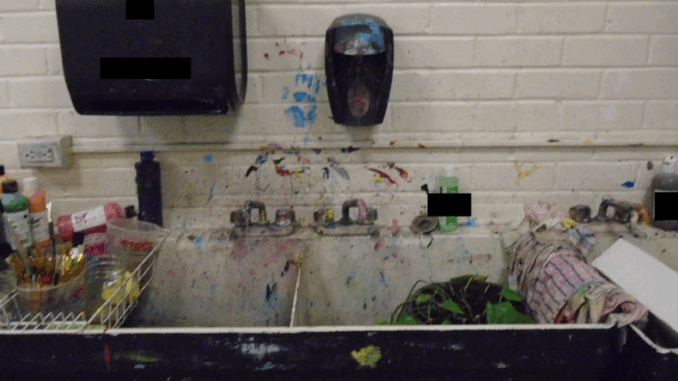
By Hank Russell
A recent audit from the New York State Comptroller’s Office found that a Long Island school district failed to identify, report and implement needed remediation to reduce lead exposure in the schools’ drinking water. Further, nearly one-half of the drinking water systems were not sampled and nearly another one in four had high levels of lead.
During the three cycles of auditd— September 6, 2016 to October 31, 2016; January 1, 2020 to June 30, 2021; and January 1, 2023 to December 31, 2025 — the auditor determined that, during the second cycle, 48% of the Glen Cove City School District’s water outlets were not properly sampled. One hundred forty-nine of the 313 water outlets the agency “identified that students, staff and the public may have access to and could consume water from, were not sampled or properly exempted by District officials, although they had sampling and remedial action plans” on the books.
Of the 82 water outlets the District sampled for Cycle Two testing, 19 water outlets exceeded acceptable lead levels of 15 parts per billion; that comes out to 23%, according to the audit. Further, 10 of these 19 outlets — or 53% — “were still in service without a follow-up test showing they were now below the lead action level or that effective controls were in place to secure these water outlets against use,” the audit said.
The comptroller’s office also found that district officials did not report the laboratory results that were conducted during the second cycle, “including the results showing 19 of 82 water outlets were above the lead action level, within the required time periods or to all required parties. District officials did not notify their local health department directly, within one business day of receiving testing results showing the 19 water outlets were above lead action levels, and never notified staff, parents and/or guardians of the test results exceeding the lead action level in writing within 10 business days, as required.
“Additionally, the District did not report all samples for testing through the Health Electronic Response Data System (HERDS) reporting system,” the comptroller’s office added.
In one instance, the auditor visited art classrooms in the middle school and noticed that there were no “Do Not Drink” signs near the sinks. Even though the teachers properly observed the students, the auditor deemed it “insufficient.” The agency noted that the school closed 102 water outlets due to elevated levels of lead, but “District officials exempted them from testing in the sampling plan, we were unable to determine whether the 149 unsampled or unsecured water outlets we identified were below the lead action level of 15 ppb,” according to the report.
The comptroller’s office made the following recommendations to the school district:
- Review and update sampling and remediation plans for all District water outlets that could be used for drinking and cooking, including details on which water outlets will be considered exempt from sampling and their controls.
- Sample all water outlets that could be used for drinking and cooking and properly secure any water outlets designated as exempt.
- Remediate or implement effective long-term controls for all water outlets that exceed the lead action level.
- Keep accurate records of all remediation efforts, including actions taken and dates performed.
- Review all work related to the lead testing program for accuracy and completeness.
- Develop procedures identifying all individuals involved in lead testing and reporting and their roles and responsibilities.
- Notify all required parties in the required time periods after lead testing results are received.
- Keep accurate records of all notification efforts performed.
On July 9, School Superintendent Dr. Alexa Doeschner responded to the comptroller’s office. “We are in agreement with your findings and are currently working on a formal corrective action to implement your recommendation,” she wrote. “[W]e appreciate the opportunity to enhance and improve our operations.”

